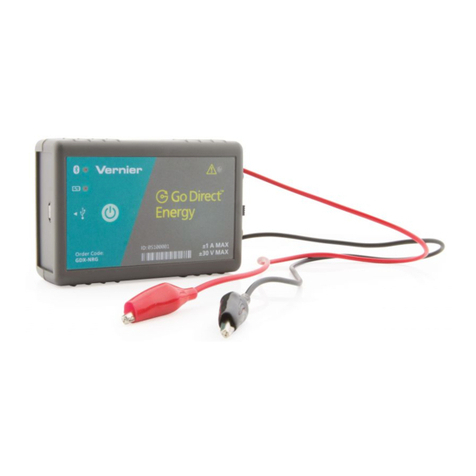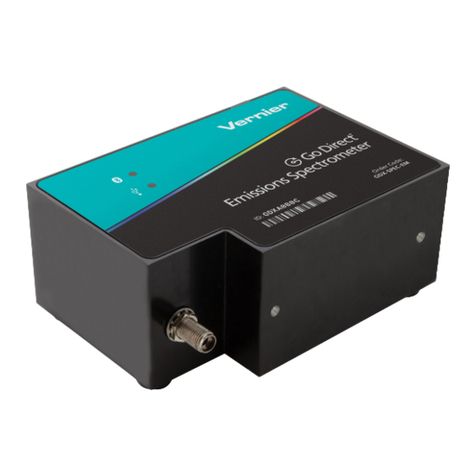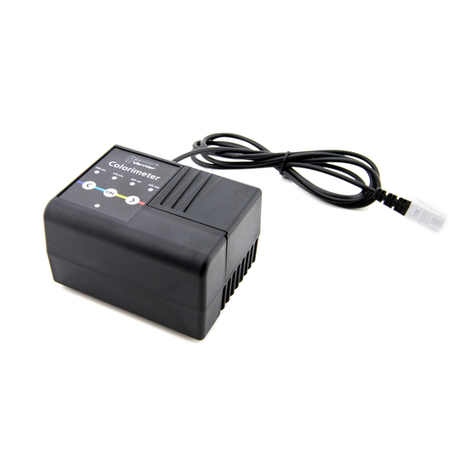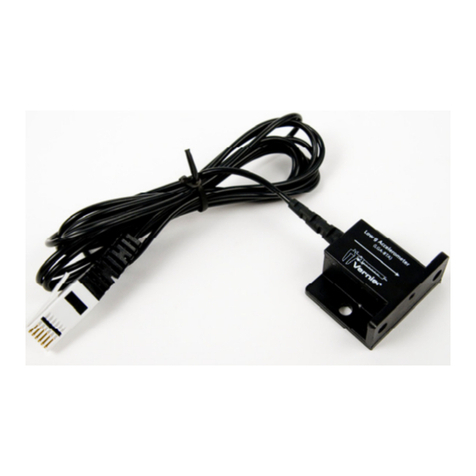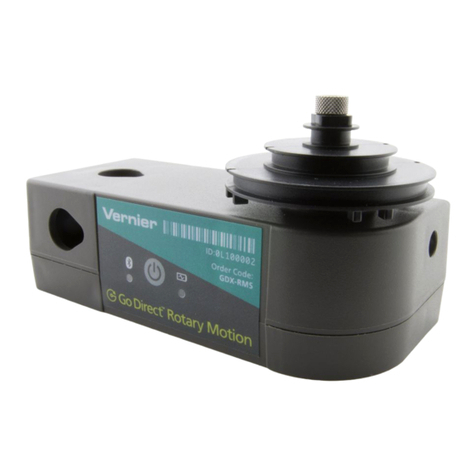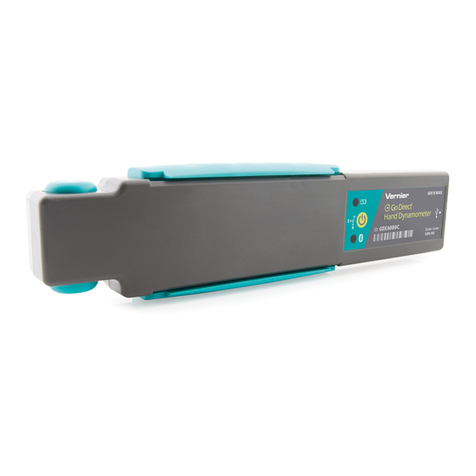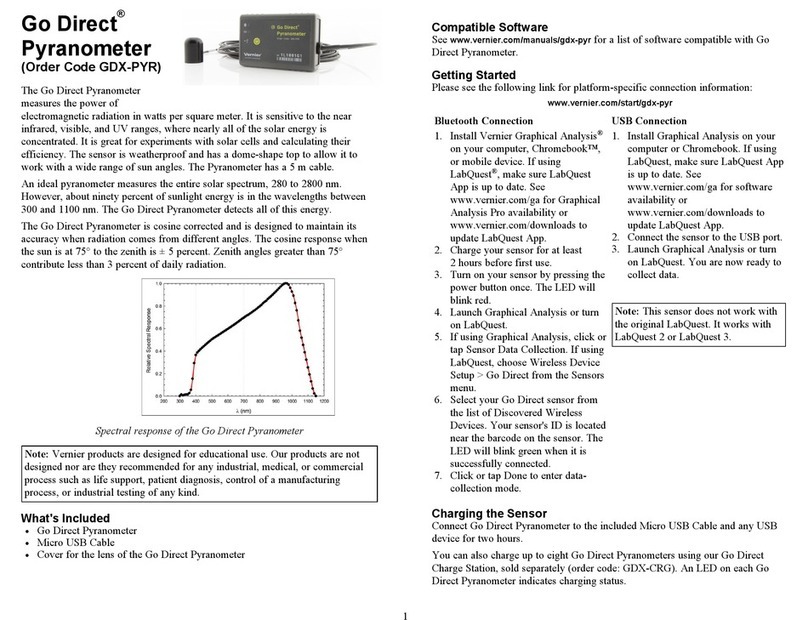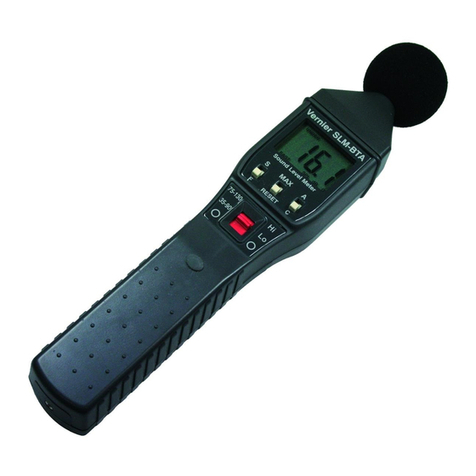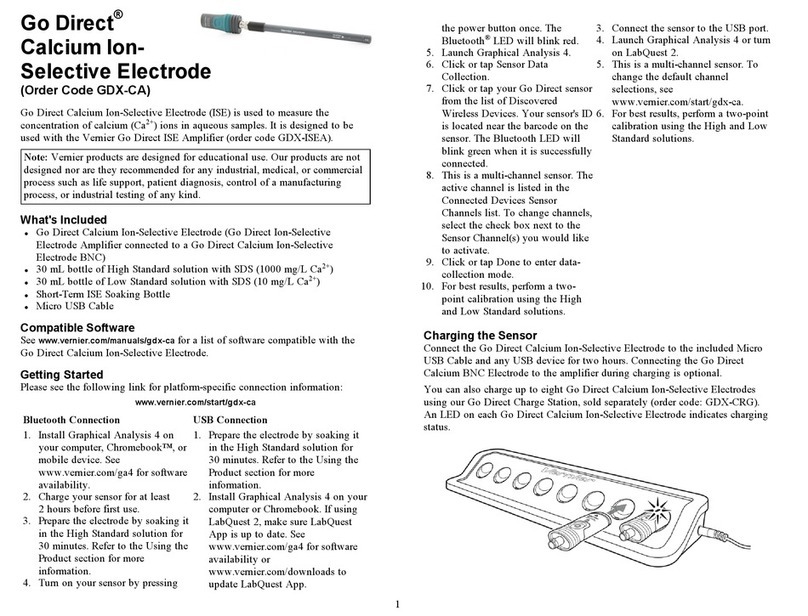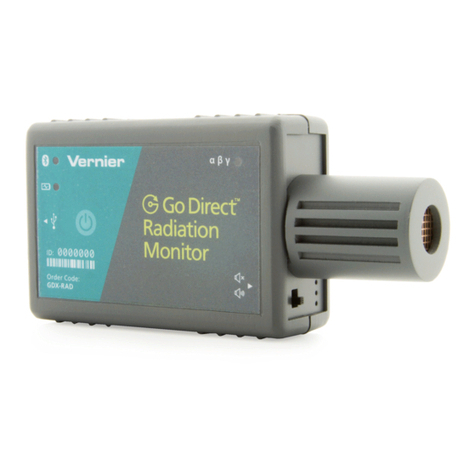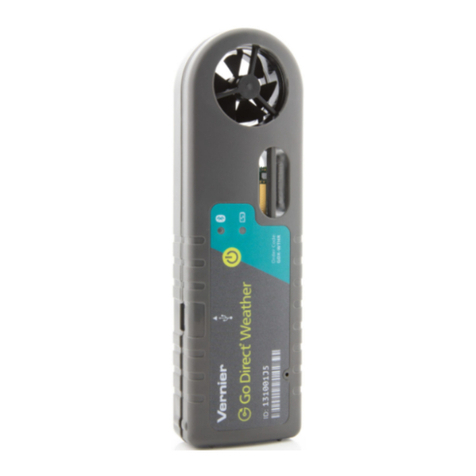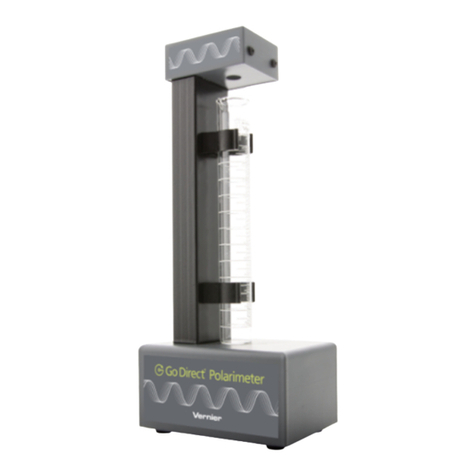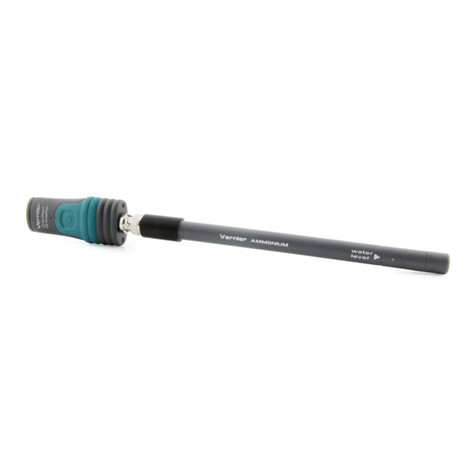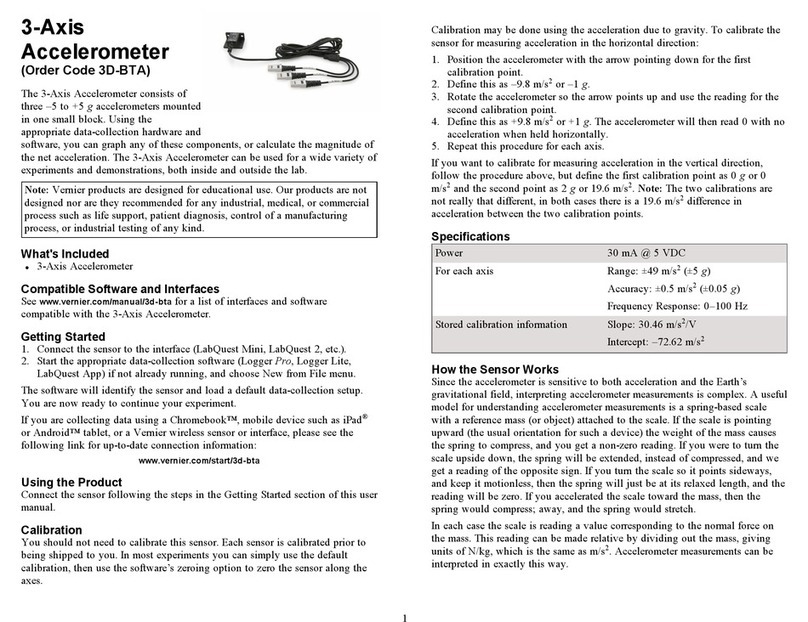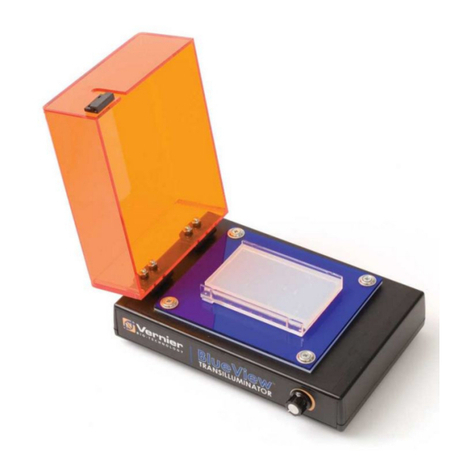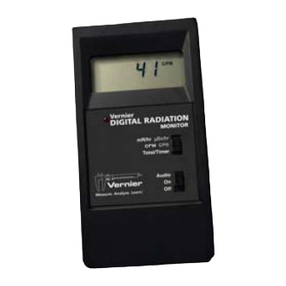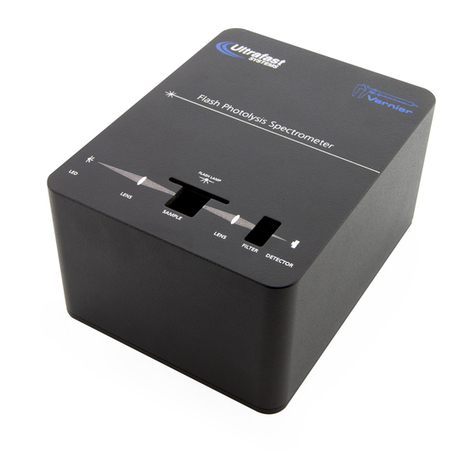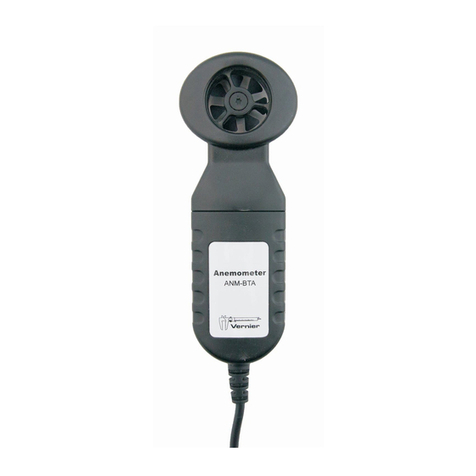
4
The user assumes all risk and liability connected with such use. Vernier is not
responsible for incidental or consequential damages arising from the use of this
instrument.
Disposal
When disposing of this electronic product, do not treat it as household waste. Its
disposal is subject to regulations that vary by country and region. This item should
be given to an applicable collection point for the recycling of electrical and
electronic equipment. By ensuring that this product is disposed of correctly, you
help prevent potential negative consequences on human health or on the
environment. The recycling of materials will help to conserve natural resources.
For more detailed information about recycling this product, contact your local city
office or your disposal service.
The symbol, shown here, indicates that this product must not be disposed of in
a standard waste container.
Vernier Software & Technology
13979 SW Millikan Way • Beaverton, OR 97005-2886
Toll Free (888) 837-6437 • (503) 277-2299 • Fax (503) 277-2440
Rev. 08/20/19
Logger Pro, Logger Lite, Graphical Analysis, Vernier LabQuest, Vernier LabQuest Mini, and other marks shown are
our trademarks or registered trademarks in the United States.
iPad is a trademark of Apple Inc., registered in the U.S. and other countries.
All other marks not owned by us that appear herein are the property of their respective owners, who may or may not
be affiliated with, connected to, or sponsored by us.
beta and gamma radiation.) If there is no indication through the back of the case,
position the end window close to, but not touching, the specimen. If there is an
indication, it is probably alpha or beta. If a sheet of paper is placed between the
window, and the indication stops, the radiation is most likely alpha. In order to
avoid particles falling into the instrument, do not hold the specimen directly above
the end window.
The Radiation Monitor does not detect neutron, microwave, radio frequency (RF),
laser, infrared, or ultraviolet radiation. Some isotopes it will detect relatively well
are cesium-137, cobalt-60, technicium-99m, phosphorus-32, and strontium-90.
Some types of radiation are very difficult or impossible for this GM tube to detect.
Beta emissions from tritium are too weak to detect using the Radiation Monitor.
Americium-241, used in some smoke detectors, can overexcite the GM tube and
give an indication of a higher level of radiation than is actually there.
Troubleshooting
For troubleshooting and FAQs, see www.vernier.com/til/3207
Repair Information
If you have watched the related product video(s), followed the troubleshooting
steps, and are still having trouble with your Radiation Monitor, contact Vernier
specialists will work with you to determine if the unit needs to be sent in for
repair. At that time, a Return Merchandise Authorization (RMA) number will be
issued and instructions will be communicated on how to return the unit for repair.
Warranty
This product is warranted to the original owner to be free from defects in materials
and workmanship for five years from the date of purchase. The Geiger-Mueller
tube is covered by a one-year warranty.
Vernier will, at its own discretion, repair or replace this instrument if it fails to
operate properly within this warranty period unless the warranty has been voided
by any of the following circumstances: misuse, abuse, or neglect of this instrument
voids this warranty; modification or repair of this instrument by anyone other than
Vernier voids this warranty; contamination of this instrument with radioactive
materials voids this warranty. Contaminated instruments will not be accepted for
servicing at our repair facility.
The GM tube has a finite life span, and it is normal that it must be replaced after a
few years, although some tubes last much longer. Tubes that fail within a year of
purchase will be replaced under warranty. Tubes that fail after a year will be
replaced for a fixed fee of $89. The GM tube is fragile and physical damage to the
entrance window is not covered by warranty. Tubes that are punctured will not be
replaced under warranty. The user is responsible for determining the suitability of
this product for his or her intended application.
